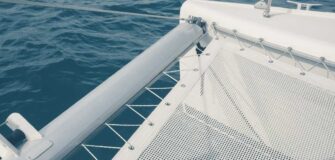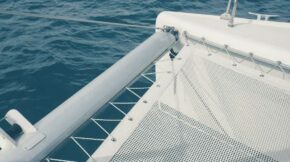Share
Although it is clear that the best way to get your hands on the right pair of skis is to choose the more expensive one. However, to ensure that you have selected the right pair of skis, you will have to put in much more effort than that.
Apart from checking the cost of your skis, there are a number of other factors that you need to keep a check on. Hence, today Traveler Ideas has brought to you a complete guide that highlights how to choose skis for yourself.
How To Choose The Right Skis?
Whether you are a beginner or an intermediate, you cannot choose the perfect pair of skis if you have not considered the below-mentioned methods. So, take a look at them and then decide.
1. The Skis Length!
There isn’t really a perfect ski size for every skier. Although height and weight are great places to start, there are other things to take into account. There are several factors to consider, including personal preferences, terrain, snow type, and ski category.
Generally speaking, you should choose a ski length that falls between your chin and the top of your head. Skis that are somewhat longer than head height are recommended for advanced and expert skiers, while skis that are slightly shorter are preferable for novices.
2. Choose According To Your Preferred Terrain.
When it comes to choosing your skis, there are a lot of choices that you have. Powder skis, backcountry skis, all-mountain wide skis, and all-mountain skis, but this will in the end depend on the preferred terrain and the type of skiing you intend to do.
3. Confirm The Ski Dimensions
Another thing you need to keep in focus on when choosing your skis is whether the dimensions are according to your needs. If you are looking to carve sharp turns, then skinnier skis are the best option. But then again, the terrain will play a huge role as it depends on the terrain you are skiing. If the snow is deeper than usual, wider skis are the best option for flotation.
4. Camber And Rockers Affect
Understanding camber and rockers’ effect on the performance of your skis is important. If you are sticking to groomed slopes, then skis that have standard alpine camber or even some tip rocker will be the best option for you. But if you prefer deeper snow, then going for tip and tail rocker or full rocker is the best option for better flotation.
5. Bindings
Now, the final countdown. The last thing you need to determine is whether you are interested in integrated bindings or separate bindings are the better way to go. Know that skis that have integrated bindings installed are way more convenient and provide better performance.
However, many advanced as well as freestyle skiers usually prefer skis without integrated bindings. This is to ensure that they can pick bindings separately that meet their needs.
Types Of Skis!
With that being over, let’s discuss the few different types of skis that you as a skier can go for. Thus, below are the 5 different types of skis you can try.
1. Freestyle Skis
Freestyle skis are designed specifically for the half-pipe, jumps, rails, and other frequent snow park elements, whereas carving skis do have dual tips. Most are bi-directional so riders can ride either forwards or backward with greater stability than other ski types because the tips are lifted far higher and the bindings sit much farther ahead. Some of them offer good skiing on other parts of the mountain despite being constructed for the snow park.
2. Racing Skis
Race skis are the longest on the market and are designed with great speed in mind. Top racers in the world today utilise skis no longer than 160 cm, despite the fact that they used to stretch over 200 cm long.
They are ideal for taking on the slalom at high speed on firm snow because they are exceptionally responsive and flexible, allowing for incredibly delicate footing. They aren’t extremely adaptable, though, so if you’re used to skis with a smaller turning radius, you could find them difficult at first.
3. Freeride Skis
Freeride skis can be said to be a more adaptable alternative to powder skis, in part because they aren’t as broad and often don’t measure more than 105mm underfoot. Although they were made for off-piste skiing, they are just as effective on groomed slopes.
To ensure the skis can grip on the piste as well as function on the undisturbed snow, the majority of these skis have a rockered tip, but it’s less extreme than with powder skis.
4. Big Mountain Skis
Big mountain skis are goods designed to keep you afloat in the deepest powder in some extreme skiing, despite the fact that they may sound very similar. They offer the added stability you need to attack undisturbed snow at high speeds because they are longer, wider, and stiffer than the previously stated models. It’s the ideal pick to bring on your chalet vacation in La Plagne if you’re a skilled skier with an aggressive style.
5. Powder Skis
Powder skis sometimes stretch to 140mm underfoot and can be even broader than huge mountain skis. They do this so they can handle the most intense snowfall. Most powder skis also have a “rockered” tip, which offers additional stability off the piste. The ski’s reverse camber, where the tip and rail are thinner than the middle, makes it the most distinctive feature when compared to standard skis.
Final Words
When choosing the right skis for yourself, make sure that you keep the above-mentioned factors in mind. Also, choose the right type of skis for yourself. So choose the best skis for yourself and enjoy the adventure.
FAQs (Frequently Asked Questions)
How To Know What Skis Are Needed?
Although there isn’t a precise formula, in general, the ideal ski length should be between your chin and the top of your head. For instance, a skier who is 6 feet tall should seek for skis that are between 170 and 190 cm long.
What Ski Type is Best For Beginners?
Piste skis are the best option because beginning skiers spend all of their time on-piste, where they can learn the fundamentals. Piste skis can advance you to the next level even after you have mastered the simple slopes. The breadth of the skis is typically narrow, which improves their ability to grip the snow.
Are Heavy or Light Skis Better?
Lightweight skis are the best way to ski better. Besides, the lighter the skis are the better the manoeuvrability.















